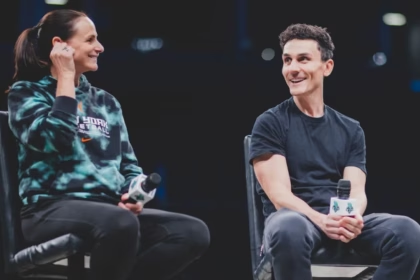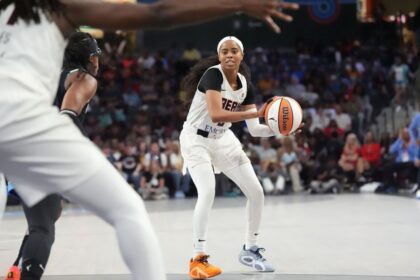Tension in the WNBA: CBA Negotiations on the Brink
A year ago, the WNBA Players Association (WNBPA) announced its intention to terminate the collective bargaining agreement (CBA) in force with the league, which expired after the 2025 season. A crucial moment, according to the president of the WNBPA, Nneka Ogwumike, who sought a new economic model based on equity, prioritizing “claiming the share that corresponds to us from the business we have built”.
Despite this, with just over a month until the October 31 deadline, there are no clear signs that a new agreement is close to being finalized. Erin Drake, legal advisor to the WNBPA, expressed her lack of confidence in reaching an agreement by that date. The situation has become complicated, with players expressing frustration at the lack of progress in the negotiations.
Napheesa Collier, vice president of the WNBPA, strongly criticized the WNBA executives. With the 2025 season and the Finals in the past, all eyes are now on the negotiating table. WNBPA executive director Terri Jackson assured that the players maintain their determination.
“The players are very clear and focused on what they are fighting for,” Jackson stated. “What they said a year ago is still valid today.”
Terri Jackson, Executive Director of the WNBPA
Although it’s not time to panic, as both parties could agree to an extension to continue negotiating in November or beyond, the urgency is palpable. This is Alofoke Deportes’ analysis of the most important CBA negotiations in the history of the league.
The Current State of Negotiations
Negotiation sessions between the league and the WNBPA involve various actors, with a composition that may vary in each meeting, according to sources close to the negotiations. WNBA and NBA staff, along with their external legal advisors, represent the league, with Commissioner Cathy Engelbert present at all substantive meetings. On the union’s side, WNBPA staff and their external legal advisors primarily participate, although advisors and player leaders may also attend.
The CBA committee of the players is usually made up of at least 33 players, including representatives from each team and members of the executive committee. The league has its own group, the labor relations committee, made up of team owners and executives. The league and the WNBPA first met in December for a preliminary conversation about the new CBA, and held a larger meeting during the All-Star weekend at the end of July.
Since then, the WNBPA has held weekly meetings with the players’ leaders, and both sides have continued to dialogue regularly, although with variations in participants and the scope of the discussions.
The Biggest Obstacle: The Salary Model
Chelsea Gray, a player for the Las Vegas Aces, pointed out that the negotiations are not where they were expected to be, mentioning market share, salaries, and player safety. The main point of conflict in the negotiations lies in how each party believes salaries should be determined.
The WNBPA seeks a system where the percentage of revenue allocated to salaries increases with business growth. In the NBA, for example, the salary cap is determined by basketball-related income (BRI), where players receive approximately half, according to their CBA.
On the other hand, the WNBA proposes a salary cap that increases at a fixed rate over time, as in the current agreement, with annual increases of 3%. The league’s salary cap in 2025 was $1,507,100, with a minimum salary of $66,079 and a maximum salary of $249,244.
The current agreement also includes a revenue-sharing provision that would result in direct payments to the players if the league reaches certain revenue targets, but it has not yet been activated.
A WNBA spokesperson stated that they agree with the players that they deserve to earn more and participate in the league’s success, proposing a guaranteed salary increase and significant revenue sharing.
NBA Commissioner Adam Silver suggested that WNBA players will receive a “significant raise” in their salaries, but preferred to measure the growth in “absolute numbers” rather than revenue sharing.
The WNBPA responded via an Instagram story, where Silver was seen repeating “I think ‘participation’ is not the right way to look at it”, with the caption “Don’t they want to share?”.
Terri Jackson emphasized that the players are seeking a salary system that values their work and allows them to grow with the business they are driving. She criticized the league’s response, which, in her opinion, has tried to maintain a system that is not tied to the business and intentionally undervalues the players.
The WNBA has experienced record growth in recent years, with an increase in attendance, viewership, merchandise sales, and franchise value. Engelbert highlighted the importance of “balancing” the increase in player salaries with the “long-term viability of the league,” seeking to incentivize investment from owners.
What’s Next?
The current CBA expires in nine days. Although player Sophie Cunningham mentioned the possibility of a lockout, the fact that the deadline is met does not automatically imply that this will happen. It is more likely that the league and the union will agree to an extension to have more time to reach an agreement. Engelbert mentioned this possibility during a WNBA Finals press conference.
A source from the league expressed skepticism about the possibility of an agreement before the Halloween deadline, but was optimistic about the possibility of avoiding a work stoppage. However, this year, the extension of the deadline raises greater concerns due to the incorporation of two new franchises, Toronto and Portland, which will begin playing next season.
A draft expansion for both teams must be held before a massive free agency that will involve most of the league’s players who are not currently on their rookie contracts. The parameters for the expansion draft must be established in the new CBA.
However, a source from the league informed that no rules or guidelines have been provided to any of the franchises. The draft for the Golden State Valkyries took place on December 6, 2024, allowing the 12 league teams to protect six players. The Valkyries selected 11 players, taking one from each team, except Seattle.
Since Toronto and Portland will participate in this expansion draft, it is believed that the other teams could protect five players. The source expects the expansion draft to take place as soon as possible after the CBA is established, but without a specific timeline or established rules, it is difficult for the two new franchises to plan.







